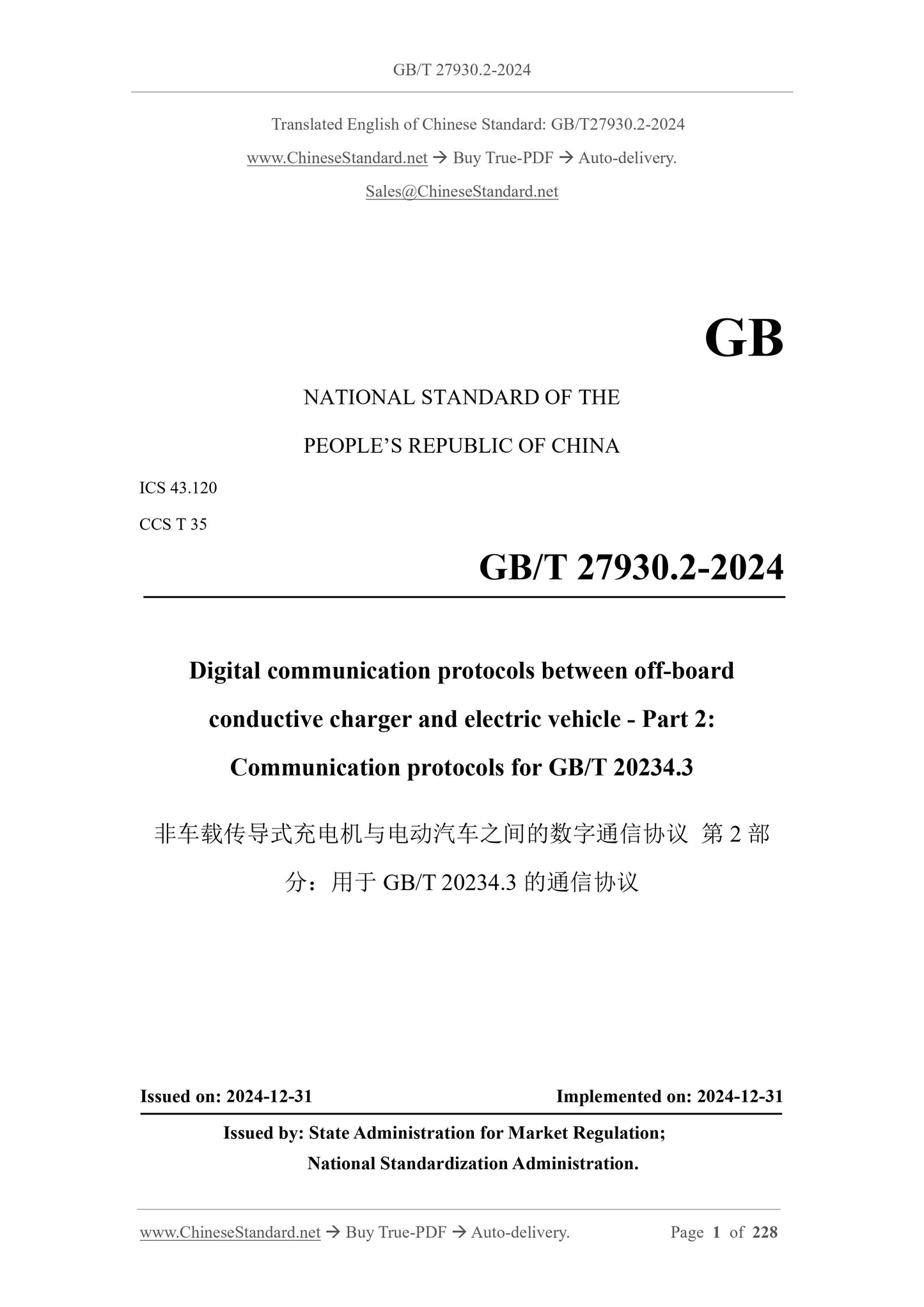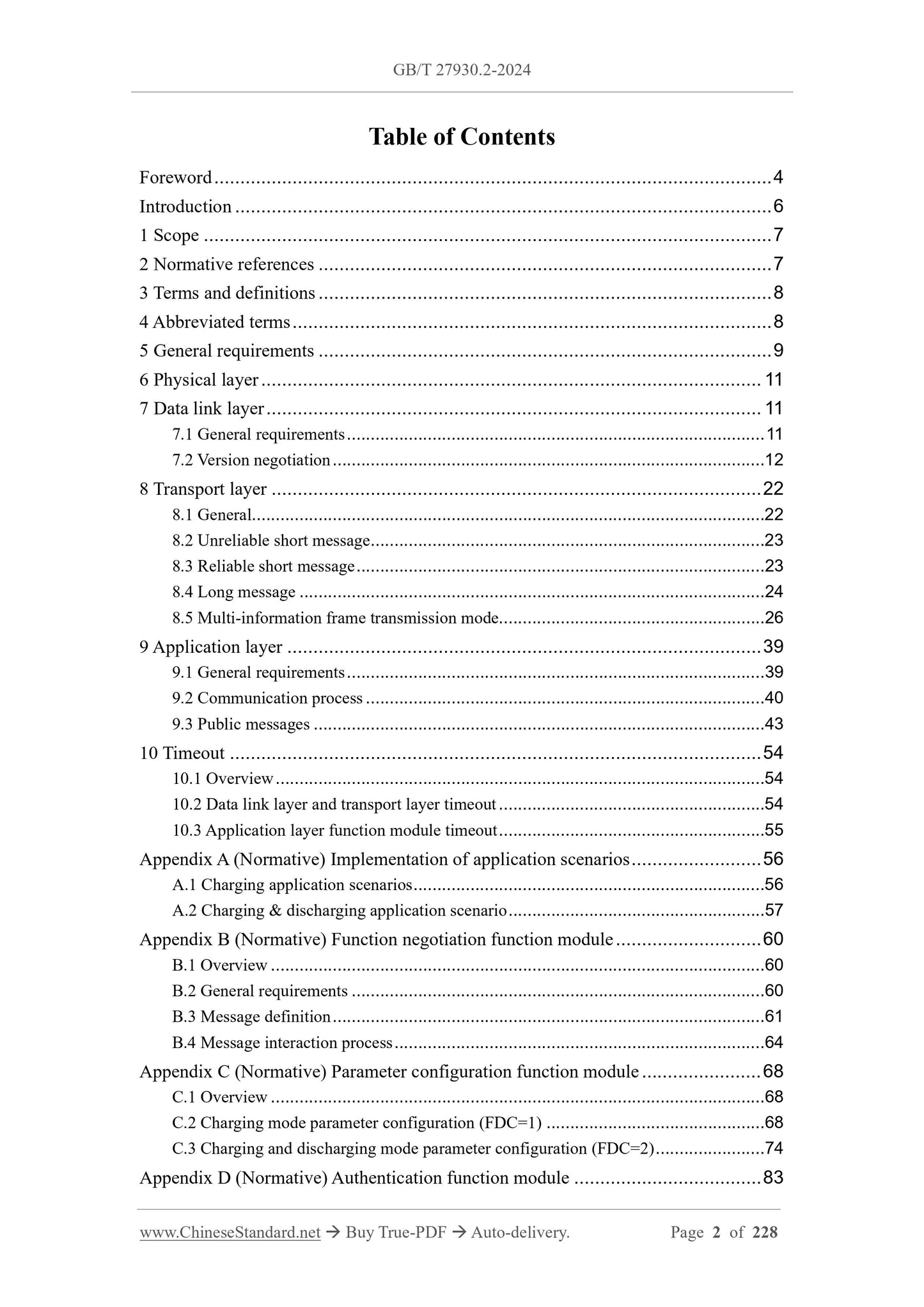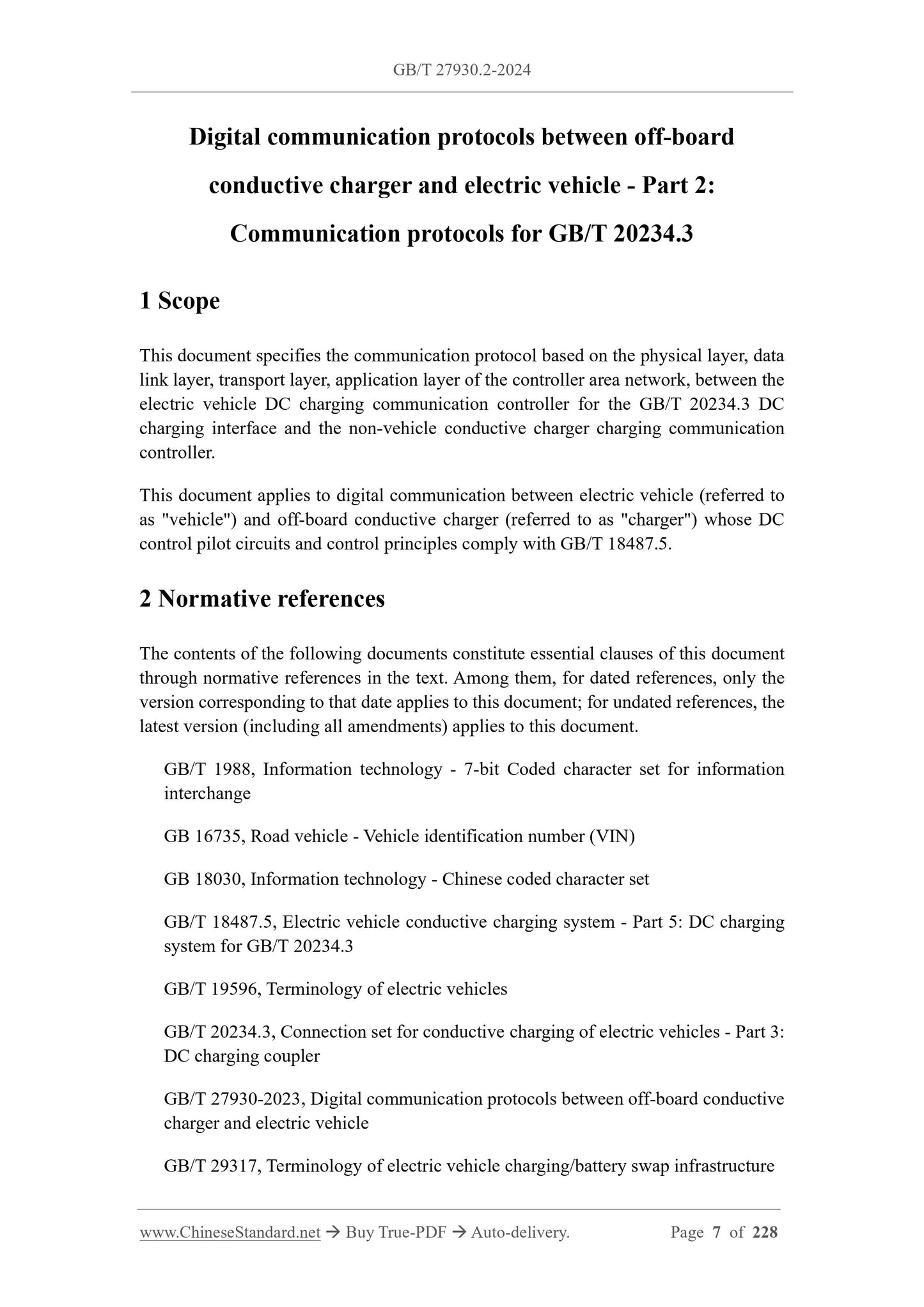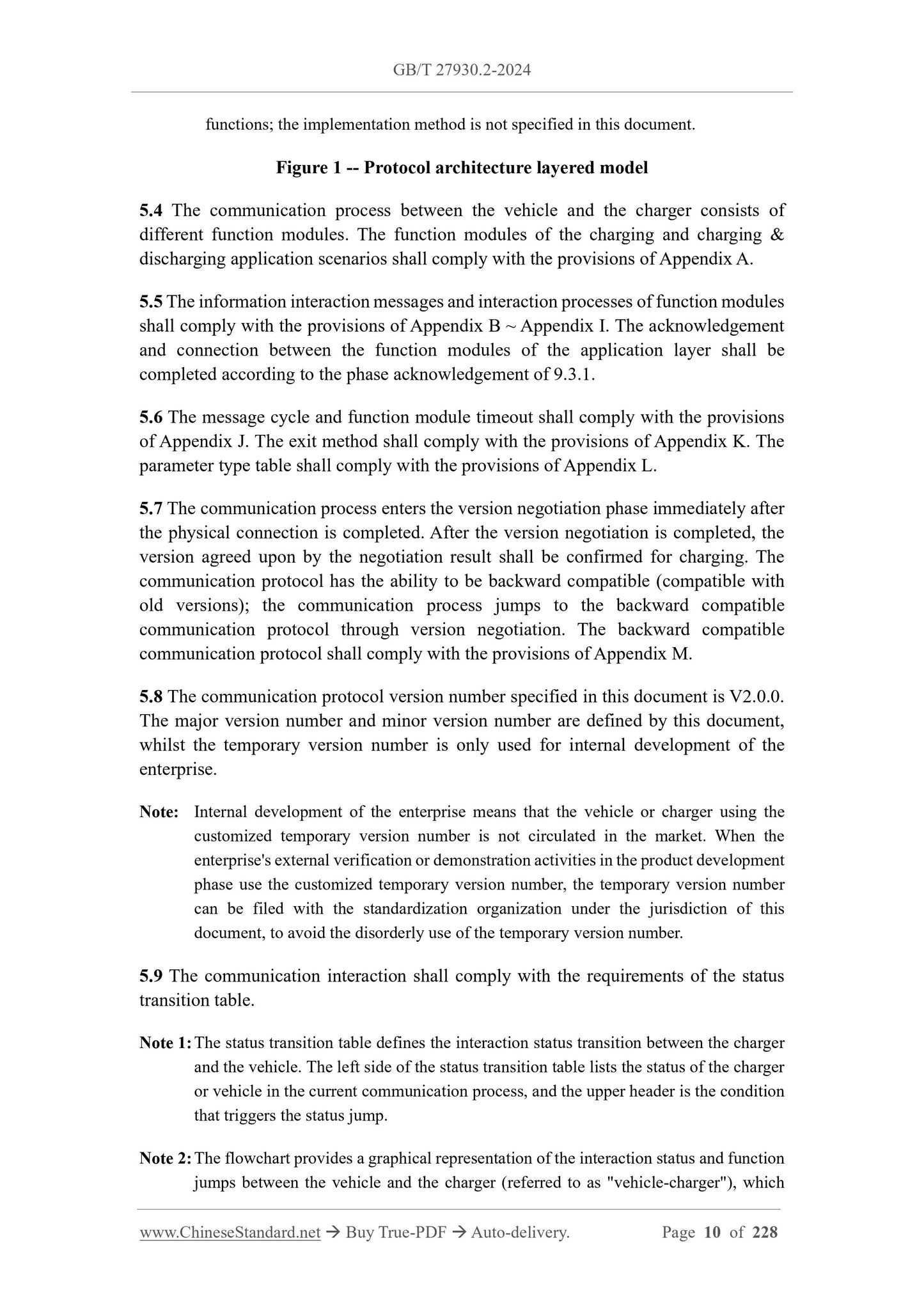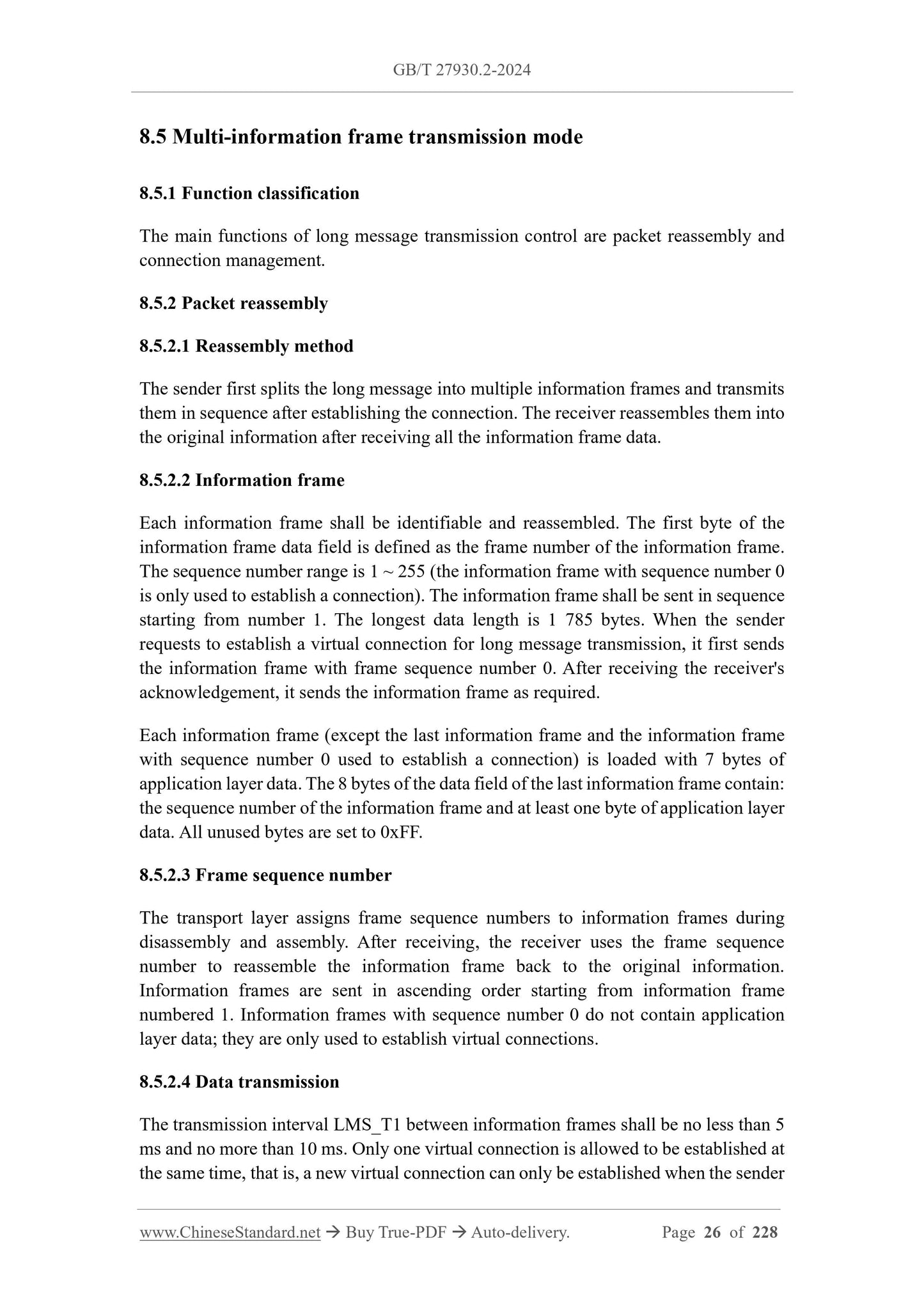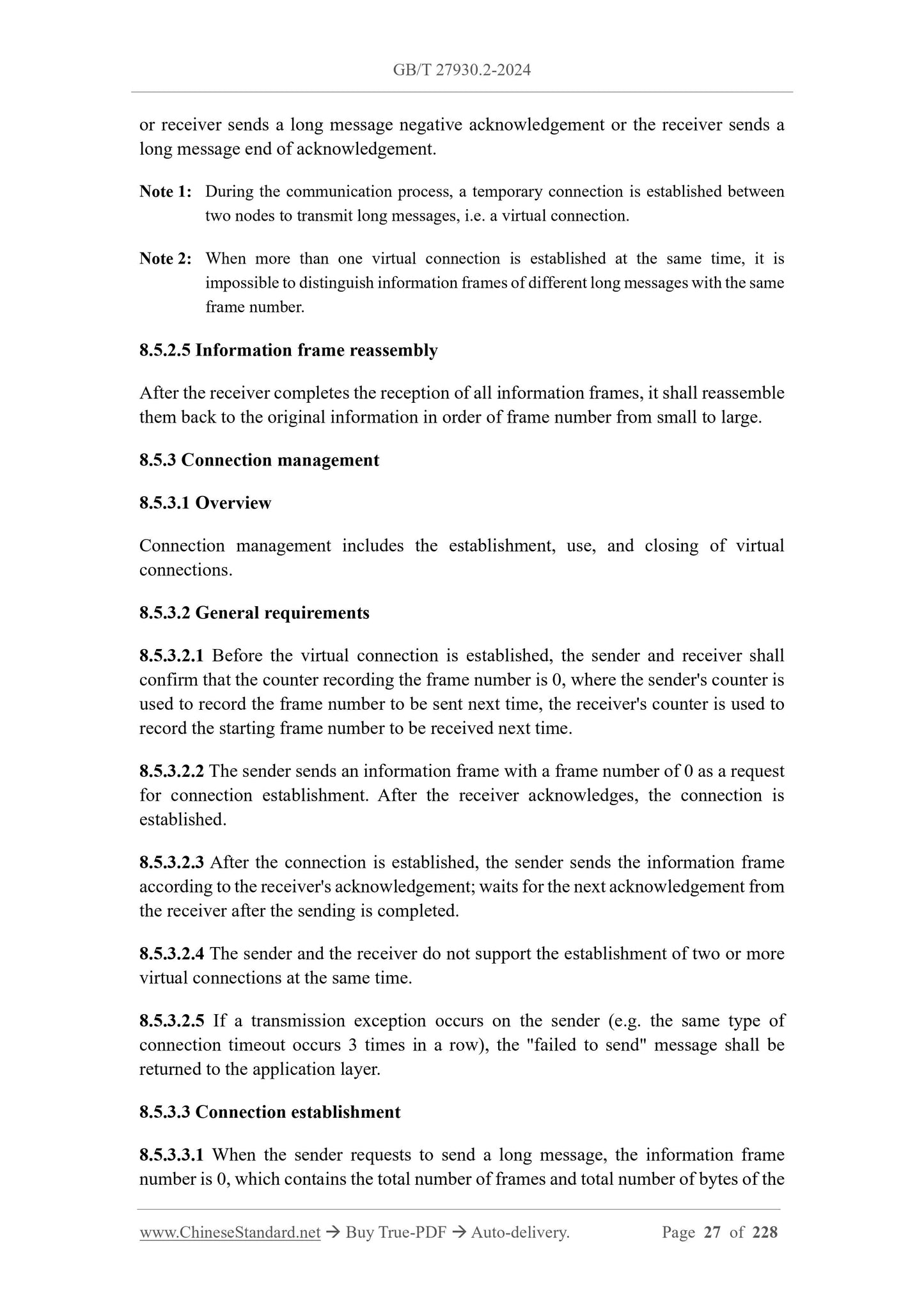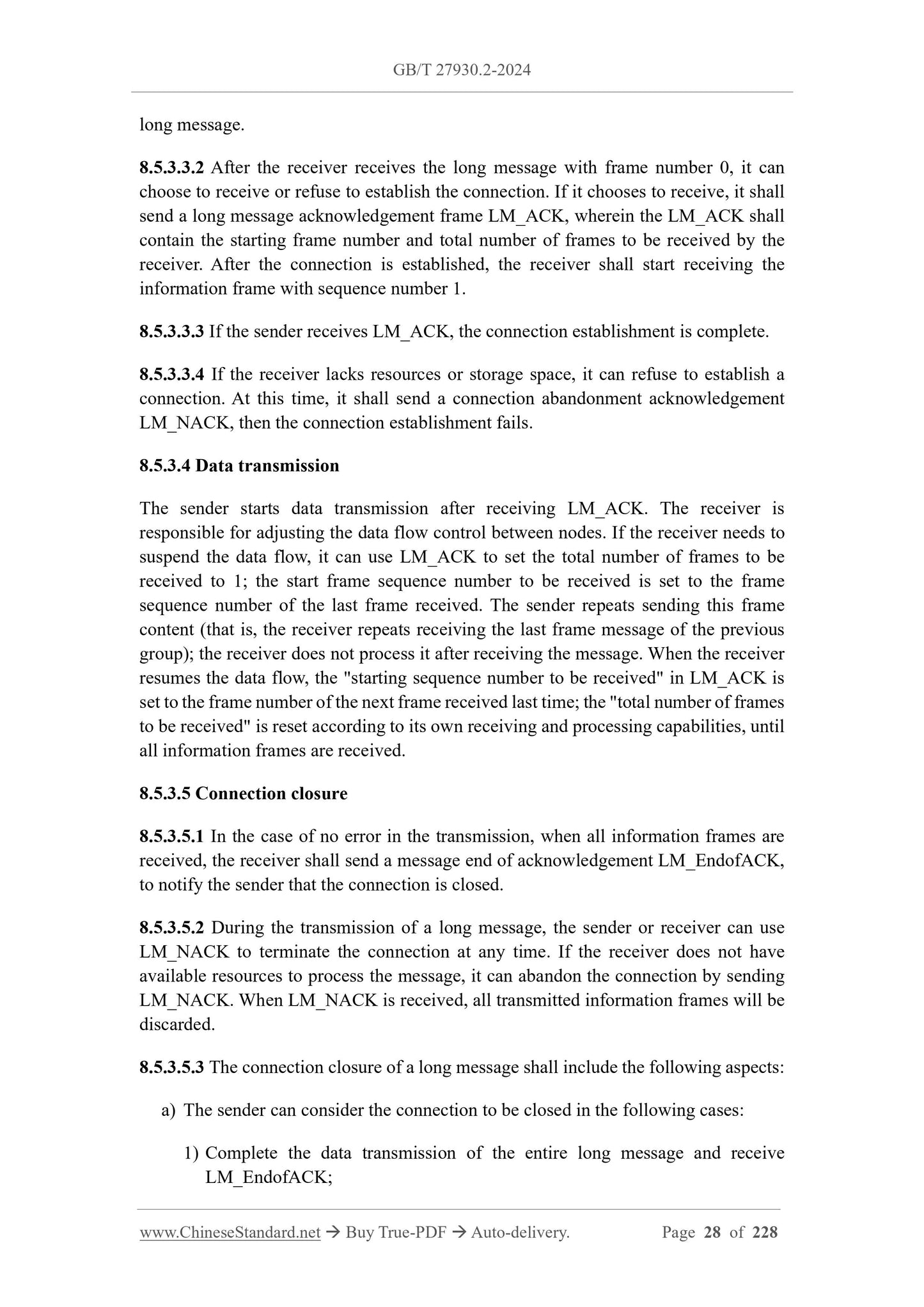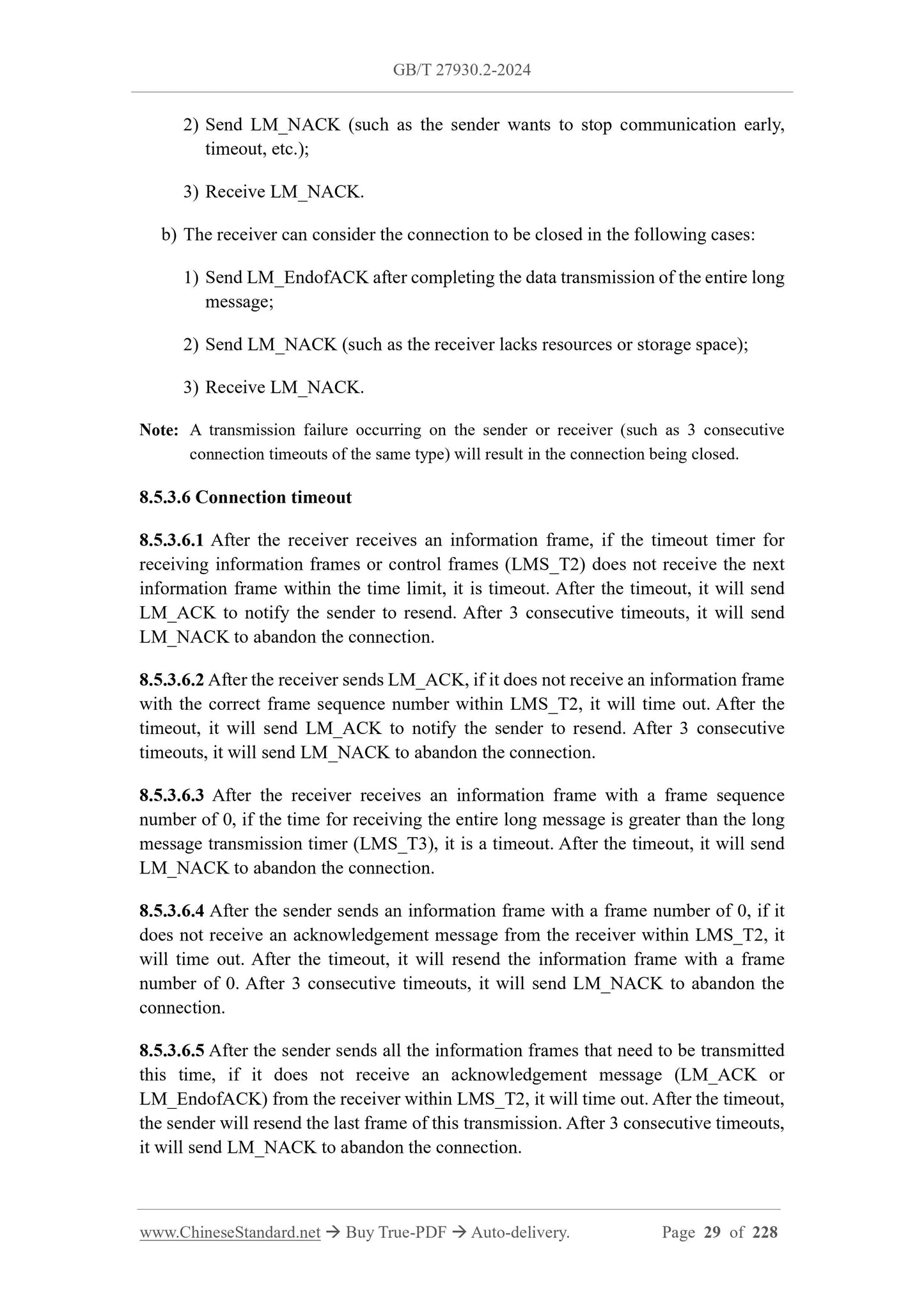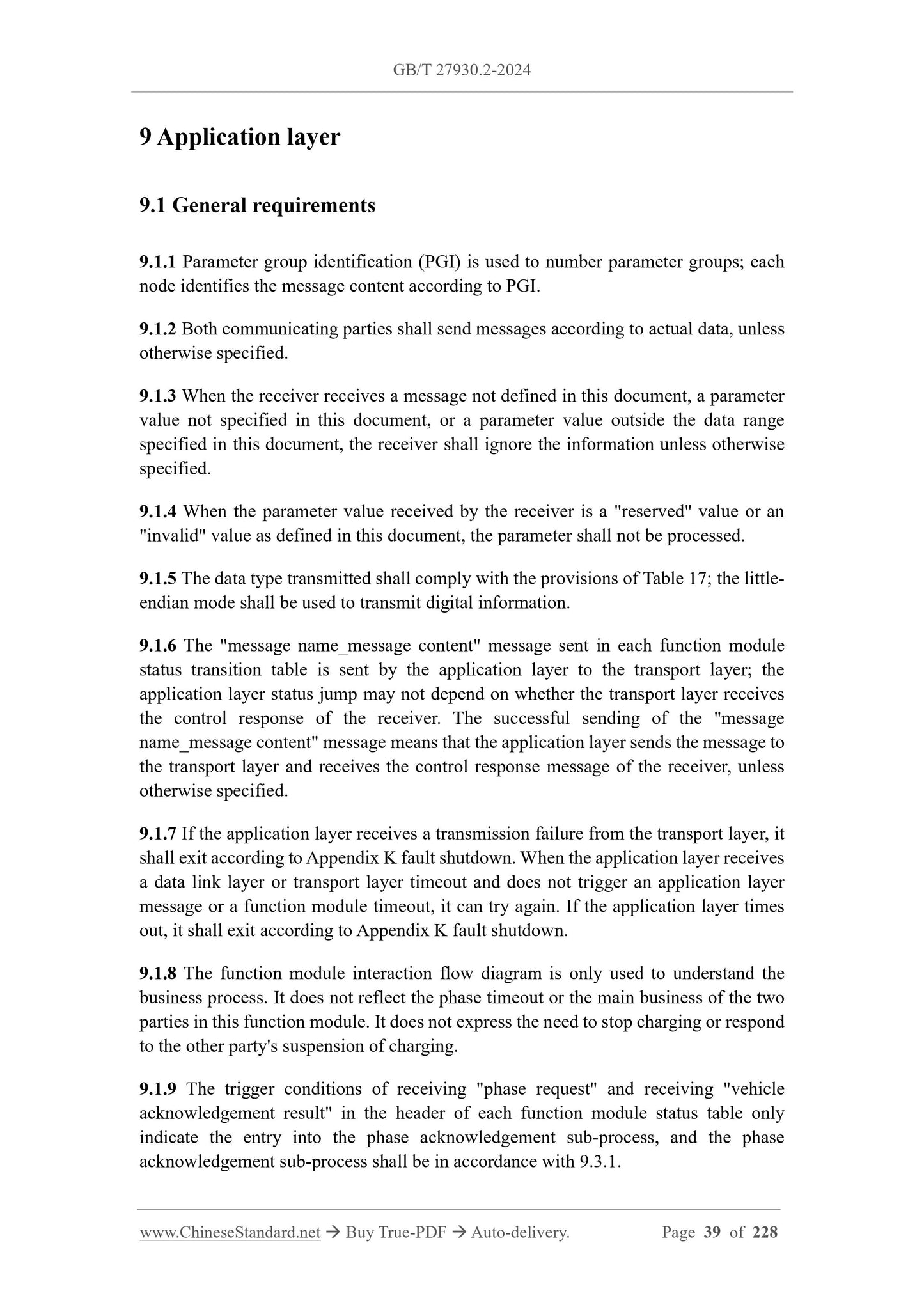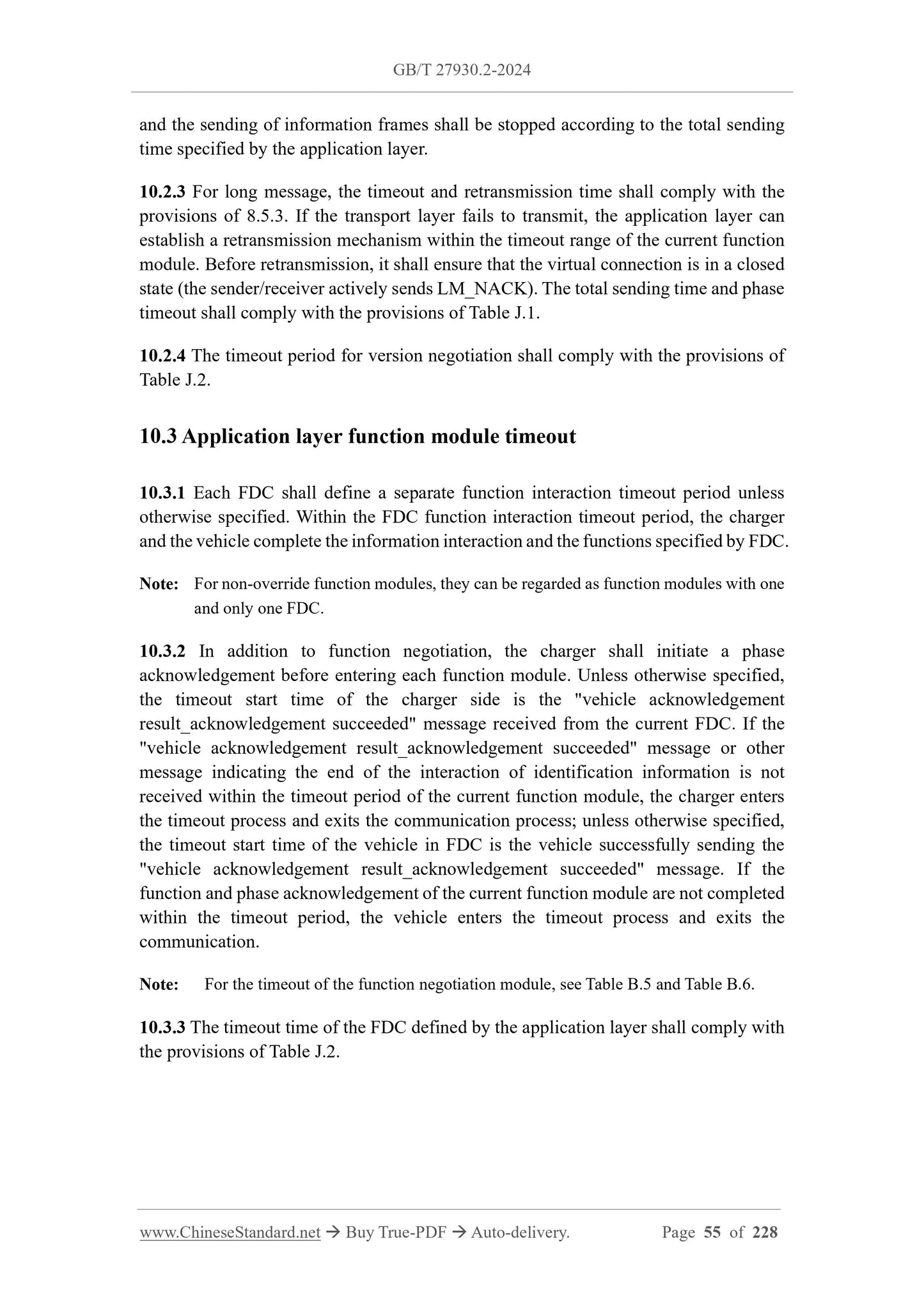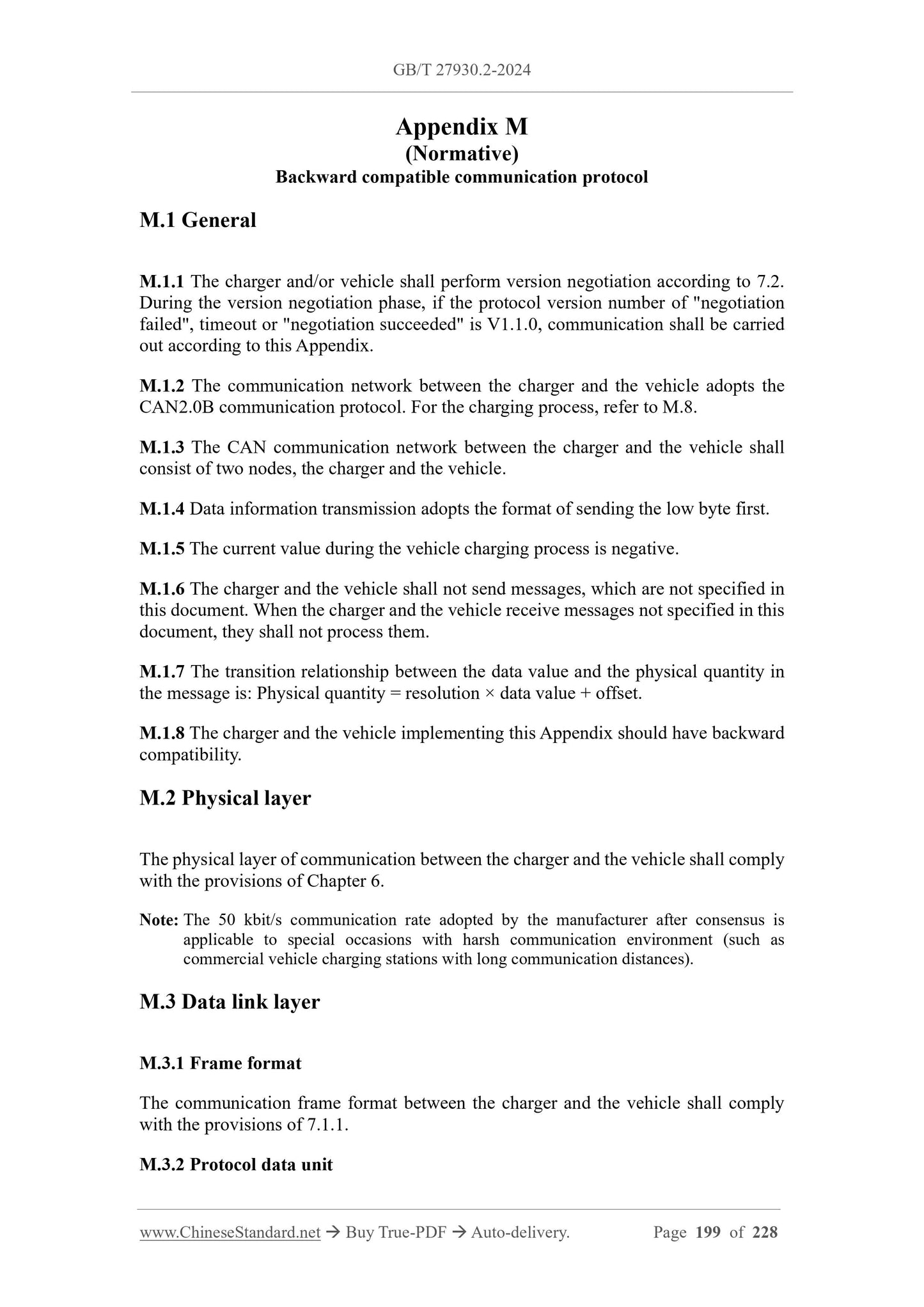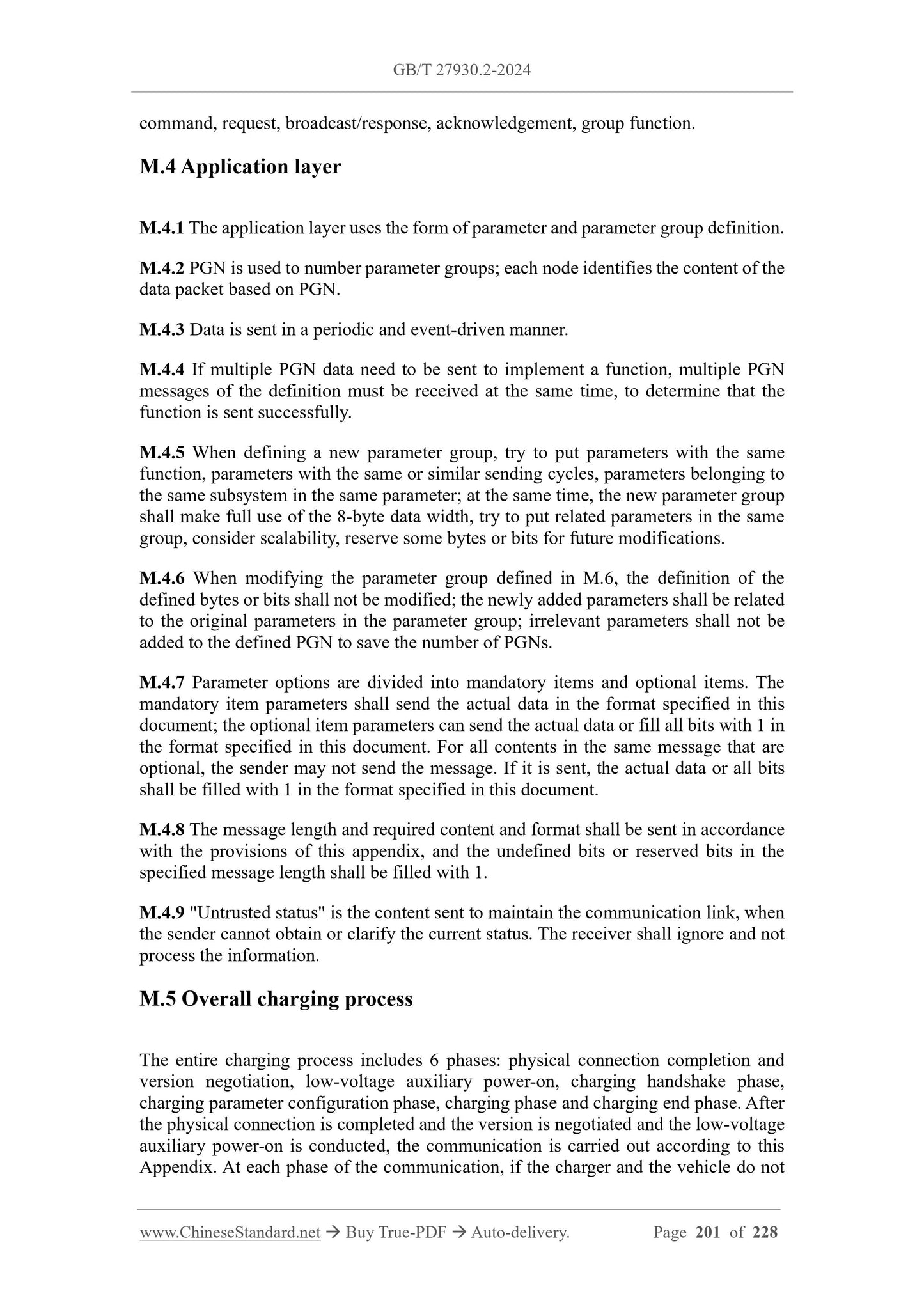1
/
of
12
www.ChineseStandard.us -- Field Test Asia Pte. Ltd.
GB/T 27930.2-2024 English PDF (GB/T27930.2-2024)
GB/T 27930.2-2024 English PDF (GB/T27930.2-2024)
Regular price
$2,630.00
Regular price
Sale price
$2,630.00
Unit price
/
per
Shipping calculated at checkout.
Couldn't load pickup availability
GB/T 27930.2-2024: Digital communication protocols between off-board conductive charger and electric vehicle - Part 2: Communication protocols for GB/T 20234.3
Delivery: 9 seconds. Download (and Email) true-PDF + Invoice.Get Quotation: Click GB/T 27930.2-2024 (Self-service in 1-minute)
Newer / historical versions: GB/T 27930.2-2024
Preview True-PDF
Scope
This document specifies the communication protocol based on the physical layer, datalink layer, transport layer, application layer of the controller area network, between the
electric vehicle DC charging communication controller for the GB/T 20234.3 DC
charging interface and the non-vehicle conductive charger charging communication
controller.
This document applies to digital communication between electric vehicle (referred to
as "vehicle") and off-board conductive charger (referred to as "charger") whose DC
control pilot circuits and control principles comply with GB/T 18487.5.
Basic Data
| Standard ID | GB/T 27930.2-2024 (GB/T27930.2-2024) |
| Description (Translated English) | Digital communication protocols between off-board conductive charger and electric vehicle - Part 2: Communication protocols for GB/T 20234.3 |
| Sector / Industry | National Standard (Recommended) |
| Classification of Chinese Standard | T35 |
| Classification of International Standard | 43.120 |
| Word Count Estimation | 185,129 |
| Date of Issue | 2024-12-31 |
| Date of Implementation | 2024-12-31 |
| Issuing agency(ies) | State Administration for Market Regulation, China National Standardization Administration |
Share
